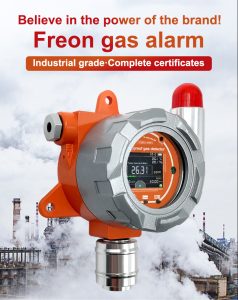Gas sensors play a critical role in industrial settings, enhancing workplace safety, and improving operational efficiency. With the ability to detect and monitor the presence of hazardous gases, these sensors help prevent accidents, protect workers' health, and ensure compliance with safety regulations. In this article, we will explore the importance of gas sensors in various industrial applications, their functionalities, and the benefits they bring in creating safer and more efficient work environments.
Industrial Gas Hazards:
Industrial processes often involve the use or production of gases that can pose significant safety risks. Common hazardous gases found in industrial environments include carbon monoxide (CO), hydrogen sulfide (H2S), ammonia (NH3), methane (CH4), and various volatile organic compounds (VOCs). Exposure to these gases can lead to asphyxiation, explosions, fires, or long-term health issues. It is crucial to have reliable gas detection systems in place to ensure worker safety and prevent costly accidents.
Role of Gas Sensors in Industrial Settings:
Gas sensors are designed to detect and measure the concentration of hazardous gases in the air. They serve as an early warning system, alerting workers and managers to potential gas leaks or abnormal levels of gases. By providing real-time data, gas sensors enable swift response actions, such as evacuations, ventilation adjustments, or shutdown of processes to mitigate risks effectively.
Functionalities of Gas Sensors:
Gas sensors utilize different detection techniques, each suited for specific types of gases or environmental conditions. Some common types of gas sensors used in industrial applications include electrochemical sensors, infrared sensors, catalytic sensors, and photoionization detectors (PID).
Electrochemical sensors employ chemical reactions to convert gas concentrations into electrical signals, providing accurate and reliable measurements. They are frequently used for detecting toxic gases like CO, H2S, and NH3. Infrared sensors use the absorption of infrared radiation to identify certain gases, making them suitable for detecting hydrocarbons like CH4. Catalytic sensors rely on the combustion of gases to produce changes in temperature, enabling the detection of flammable gases. PID sensors utilize ultraviolet light to ionize gases, allowing for the measurement of VOC concentrations.
Benefits of Gas Sensors in Industrial Applications:
a. Safety Enhancement: Gas sensors play a crucial role in ensuring worker safety by continuously monitoring the environment for potential gas hazards. They provide early detection and warning of gas leaks, helping prevent accidents and minimizing the risk of exposure to toxic or flammable gases.
b. Compliance with Regulations: Occupational safety regulations and standards require industrial facilities to monitor hazardous gases and maintain safe working conditions. Gas sensors assist in compliance efforts by providing accurate and real-time data, allowing companies to take necessary measures to ensure adherence to safety guidelines.
c. Cost Savings: Accurate gas detection systems help prevent costly accidents, such as explosions or fires, which can result in property damage, production downtime, and worker injuries. By proactively identifying gas leaks or abnormal gas levels, gas sensors contribute to significant cost savings in terms of maintenance, repairs, and insurance premiums.
d. Process Optimization: Gas sensors are not only essential for safety but also improve operational efficiency. By monitoring gas concentrations during industrial processes, these sensors help optimize ventilation systems, minimize energy wastage, and ensure proper combustion processes. This, in turn, leads to improved productivity and reduced operating costs.
e. Data Logging and Analysis: Gas sensors equipped with data logging capabilities enable the collection and analysis of historical gas concentration trends. This data can be used for performance evaluations, identifying areas for process improvement, and making informed decisions regarding workplace safety measures.
f. Remote Monitoring and Alarming: Advances in connectivity technologies facilitate remote monitoring of gas sensors. This allows for real-time access to gas concentration data, enabling immediate response and remote alarm notifications in the event of gas leaks or abnormal gas levels. Remote monitoring capabilities are particularly valuable for large industrial facilities or remote locations where constant manual supervision may not be feasible.
Future Developments and Challenges:
Gas sensor technology is continuously evolving to meet the demands of industrial applications. Research focuses on improving sensor sensitivity, selectivity, and durability, as well as reducing power consumption and miniaturizing sensor designs. Additionally, advancements in wireless communication and IoT integration enable the creation of smart sensor networks, pr
 : +86 155 8830 2704
: +86 155 8830 2704 : jxdziot@gmail.com
: jxdziot@gmail.com
